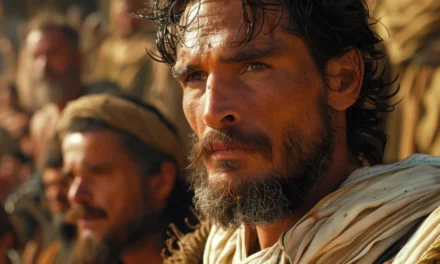
The Supreme Court examines NY State Case

“The first to speak in court sounds right— until the cross-examination begins.” — Proverbs 18:17
After hearing a media sound bite about a Supreme Court Decision about a church’s right to have more than 25 people gathered in one place, I didn’t feel like they were giving me all the details.
So after searching on the web, I was able to go to the U.S. Supreme Courts website and the latest decision was clearly visible, to click on.
I clicked on the link to the PDF and started to read the opinion handed down by the court in a 5-4 decision that gave the Roman Catholic Diocese of Brooklyn (and now every other church and place of worship) an injunction, so churches can meet without fear of the New York State government from taking action until the lesser court (NY State’s Court) come up with a final decision.
I was surprised how easy the 33 page PDF was to read. There were a few Latin terms that I Googled, but over all I thought it was easy to understand what point the majority opinion and the dissenting opinions.
It is interesting that Chief Justice Roberts did not join the majority decision, but dissented—even though he is a conservative judge!
Here are some of the highlights:
ROMAN CATHOLIC DIOCESE OF BROOKLYN v. CUOMO
Highlights from the Recent Supreme Court Decision
The Supreme Court issued a decision on a case that grants an injunction against New York State emergency attendance rules limiting attendees at churches to 10-25 people.
Injunction
An injunction is a temporary hold on enforcement of a law until the regular courts can make a decision. In this case, churches can admit more people without fear of arrest or fines until the regular courts make a decision.
This is temporary, so don’t think you’ve won completely, or lost completely.
The Supreme Court ruled…
[The applicants] have shown that their First Amendment claims are likely to prevail, that denying them relief would lead to irreparable injury, and that granting relief would not harm the public interest.
— Roman Catholic Diocese of Brooklyn vs. Cuomo, Per Curiam, Pg. 2
Likelihood of success on the merits.
The applicants have made a strong showing that the challenged restrictions violate “the minimum requirement of neutrality” to religion.
— Roman Catholic Diocese of Brooklyn vs. Cuomo, Per Curiam, Pg. 2
Irreparable harm.
There can be no question that the challenged restrictions, if enforced, will cause irreparable harm. “The loss of First Amendment freedoms, for even minimal periods of time, unquestionably constitutes irreparable injury.” cite: Elrod v. Burns
— Roman Catholic Diocese of Brooklyn vs. Cuomo, Per Curiam, Pg. 5
Public interest.
Finally, it has not been shown that granting the applications will harm the public. As noted, the State has not claimed that attendance at the applicants’ services has resulted in the spread of the disease. And the State has not shown that public health would be imperiled if less restrictive measures were imposed.
— Roman Catholic Diocese of Brooklyn vs. Cuomo, Per Curiam, Pg. 6
The restrictions at issue here, by effectively barring many from attending religious services, strike at the very heart of the First Amendment’s guarantee of religious liberty. Before allowing this to occur, we have a duty to conduct a serious examination of the need for such a drastic measure.
— Roman Catholic Diocese of Brooklyn vs. Cuomo, Per Curiam, Pg. 6
The U.S. Supreme Court voted 5-4 in favor of the Roman Catholic Diocese of Brooklyn, New York
What does this mean to Christians?
This means that churches, synagogues, mosques or other places of worship cannot be charged with a violation of New York State’s Emergency Orders restricting gatherings of 25 or more within religious institutions.
Although this applies only to New York State, the Supreme Court rulings tend to be followed by other states. Please check your state’s position before violating any emergency orders. Don’t forget that this is only a temporary injunction, so check frequently to New York State Court rulings for continuing changes.
You can read the entire 33 page opinion at: Supreme Court Ruling: Roman Catholic Diocese of Brooklyn of New York vs. Mario Cuomo
Take a look at the carousel below for some highlights from the ruling.
Icon credits:
Judge by Wonmo Kang from the Noun Project
Judge by Eqquindi from the Noun Project
Document & Courthouse by IconMark from the Noun Project










Recent Comments